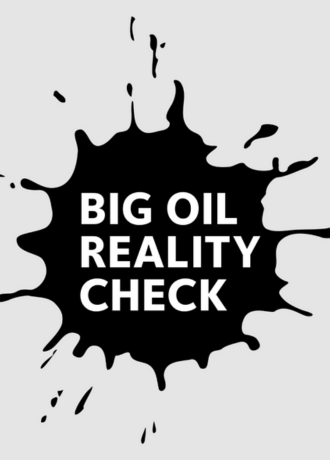
Big Oil Reality Check 2023 — An Assessment of TotalEnergies, Eni, and Equinor’s Climate Plans
These briefings reveal that Total, Eni, and Equinor are on the cusp of approving a surge of new oil and gas development. If they proceed with all the projects in their anticipated pipeline for 2023, Eni could rank as the world’s third worst oil and gas expander this year and Equinor as the world’s eighth worst by the total volume of new reserves approved for extraction.
Published by Oil Change International.
May 2023
|
Equinor’s Reality Check:
|
The urgent need to transition to clean, renewable energy is becoming more apparent every day. However, companies like Total, Eni, and Equinor — French, Italian, and Norwegian oil and gas companies respectively, continue to prioritize oil and gas investments that fuel the climate crisis.
These three briefings, titled Big Oil Reality Check: Total, Big Oil Reality Check: Eni, and Big Oil Reality Check: Equinor, reveal that these companies are on the cusp of approving a surge of new oil and gas development. If Eni and Equinor proceed with all the projects in their anticipated pipeline for 2023, Eni could rank as the world’s third worst oil and gas expander this year and Equinor as the world’s eighth worst by the total volume of new reserves approved for extraction. Additionally, we reveal that Total ranked third in the world for approving new oil and gas expansion in 2022.
Furthermore, both Eni and Equinor plan to increase their oil and gas production in the near term. Equinor plans to increase extraction by 3% in 2023, and for its 2030 production “to be on par with today,” according to CEO Anders Opedal. Similarly, Eni plans to increase extraction by 3 to 4% per year through 2026, and then sustain that level of production to 2030.
In 2023, Total, Eni and Equinor announced record 2022 profits of USD 36.2 billion, USD 14 billion, and USD 28.7 billion, respectively. The companies primarily used these profits to increase investments in fossil fuels and payouts to shareholders, rather than accelerate a just transition towards renewable energy. For every dollar that TotalEnergies reported spending on ‘low-carbon energies’, which include fossil gas, in 2022, the company spent a combined 8 dollars on investments in oil and gas and on rewarding shareholders with dividends and buy-backs.
Since 2020, Oil Change International has evaluated big oil and gas company’s climate pledges against ten minimum baseline criteria for assessing whether a company’s climate pledges and plans come even close to aligning with the Paris Agreement. (A detailed explanation of our rating criteria is available in Table 2 of our May 2022 report) Against these criteria, Total’s, Eni’s, and Equinor’s climate pledges and plans remain grossly insufficient, as shown in the following tables:



Ultimately, neither Total, Eni, nor Equinor comes anywhere close to the bare minimum for alignment with the Paris Agreement, which requires rapid, deep cuts in oil and gas production and sales that need to happen within this decade. No oil and gas company can credibly claim to be aligned with the 1.5°C limit without taking immediate action to phase out fossil fuels. When evaluating oil and gas climate pledges, here are some critical questions that financiers and policymakers must ask:
Does your emissions reduction commitment include all of the pollution related to your fossil fuel production and sales? If not, what proportion of the total is covered?
What volume of oil and gas do you expect to produce in 2025? In 2030? Are you actually committing to begin winding it down this decade? Will you reduce your production by at least 3 percent per annum between now and 2030?
Will you terminate all the projects in your current development pipeline that have not already received a final investment decision, to align with the IEA’s 1.5°C scenario? If not, what projects in your current development pipeline will you commit to terminating in order to meet these goals?
How much money are you projecting to invest in carbon capture and storage, carbon offsets, negative emissions technologies, or other fuels that still pollute, such as biomass, versus renewable technologies like wind and solar?
Click here to download Total’s Reality Check.
Click here to download Eni’s Reality Check.
Click here to download Equinor’s Reality Check.
Notes:



